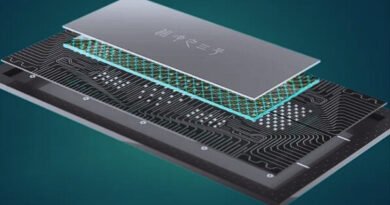Revolutionizing Computing: World’s First Graphene Semiconductor Unleashes Quantum Possibilities

Scientists have overcome a major limitation in graphene, turning it into a functional semiconductor operating at terahertz frequencies, showcasing 10 times the mobility of silicon. This breakthrough in creating the world’s first working graphene-based semiconductor opens possibilities for future chips powering significantly faster PCs and quantum computers. Epitaxial graphene, a crystal structure of carbon bonded to silicon carbide, forms the basis for this new material, offering enhanced mobility for electrons, resulting in transistors that operate at terahertz frequencies—10 times the speed of current silicon-based counterparts.
Semiconductors, exhibiting both conductor and insulator properties, play a crucial role in electronic devices. While silicon has traditionally been the semiconductor material of choice, it faces limitations in terms of maximum switching speed, heat generation, and size reduction. Graphene, a single layer of carbon atoms in a hexagonal lattice, boasts superior conductivity, allowing electrons to move with less resistance.
The challenge with graphene has been the absence of a “band gap,” necessary for transistors to switch on and off. Researchers addressed this limitation by fusing graphene onto silicon carbide, using specialized furnaces and a precise heating and cooling process. Through a process known as “doping,” where atoms donating electrons are added to graphene, a functional graphene semiconductor with a band gap was achieved. Importantly, this breakthrough material can be seamlessly integrated into existing manufacturing processes.
Beyond the realm of traditional computing, graphene-based semiconductors hold promise for quantum computing applications. Electrons in graphene exhibit quantum mechanical wave-like properties, particularly at very low temperatures, aligning with the requirements of quantum devices. While this potential is an area of ongoing research, the scientists acknowledge the need for further exploration to determine whether graphene-based semiconductors can outperform the current superconducting technology utilized in advanced quantum computers.








